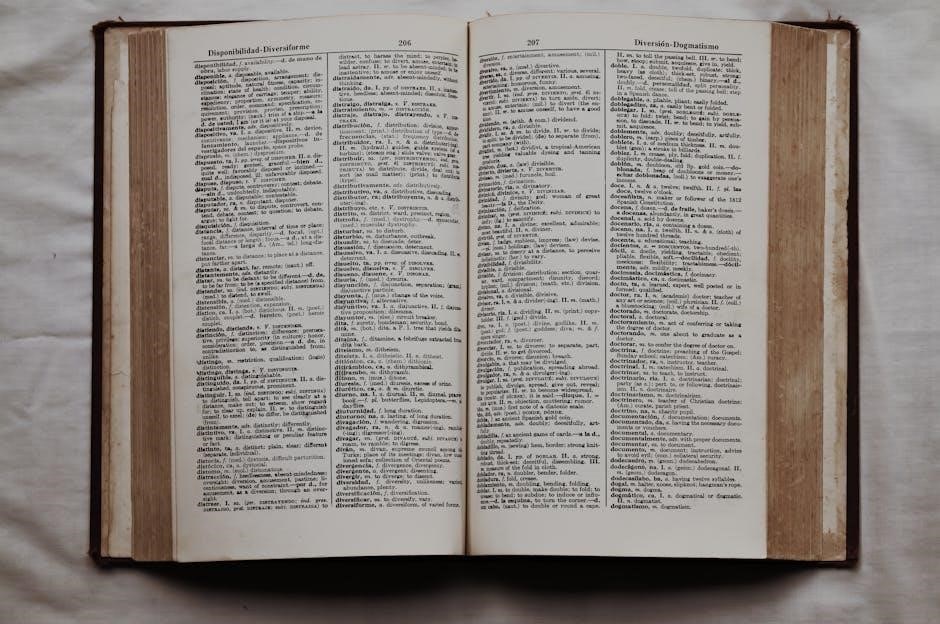A necktie is a cornerstone of men’s fashion, symbolizing professionalism and style. It adds a touch of elegance, making it a versatile accessory for formal and semi-formal occasions.
Importance of a Tie in Men’s Fashion
A tie is a defining element in men’s fashion, elevating an outfit from ordinary to extraordinary. It signifies professionalism, confidence, and personal style. Wearing a tie can convey competence and authority, making it essential for formal events, business meetings, and job interviews. Beyond functionality, a tie adds a touch of elegance, allowing men to express their individuality through color, pattern, and texture. It bridges the gap between a shirt and suit, creating a polished look. A well-chosen tie can make a lasting impression, reflecting a man’s attention to detail and respect for tradition. Thus, it remains a timeless accessory in men’s wardrobes.

Choosing the Right Tie
Selecting the perfect tie involves considering fabric, pattern, and color to complement your outfit. Ensure the width matches your suit lapels for a balanced look and proper fit.
How to Select a Tie Based on the Occasion
Choosing the right tie for an event is essential to making a strong impression. For formal events like weddings or black-tie gatherings, opt for sleek silk ties in neutral or dark colors. Business meetings call for classic patterns like stripes or dots in professional tones. Casual outings allow for bolder patterns and brighter hues. Consider the dress code and venue to ensure your tie complements the setting. Pairing the tie with your shirt and suit is key to creating a cohesive look. Let the occasion guide your fabric choice, with wool or cotton ties suitable for everyday wear and silk or satin for more elegant affairs.
Matching the Tie with Your Outfit
Coordinating your tie with your outfit is crucial for a polished look. Start by ensuring the tie’s colors complement or contrast with your shirt and suit. For a harmonious look, opt for a tie that shares at least one color with your shirt or suit. Patterns should be balanced—avoid clashing designs like bold stripes with busy florals. Solid-colored shirts offer versatility, while patterned shirts call for simpler tie designs. Consider the fabric and texture to maintain consistency. For example, a silk tie pairs well with a wool suit. The key is to create a balanced, cohesive ensemble that reflects personal style and attention to detail.
The Fundamentals of Tie Etiquette
The fundamentals of tie etiquette involve proper length, width, and color coordination. Ensure the tie reaches your belt buckle and matches your outfit’s formality and occasion.
Understanding Proper Tie Length and Width
The proper tie length ensures the tip touches your belt buckle, avoiding a look that’s too long or short. The width should match your suit’s lapels for balance. A well-fitted tie creates a polished appearance, essential for formal occasions. Ensuring the tie isn’t twisted and lies flat is also crucial for a professional look. Adjustments may be needed based on body type and outfit style. Proper proportions enhance confidence and ensure a refined, put-together aesthetic.
Tie Colors and Patterns: When to Use Them
Tie colors and patterns play a significant role in completing an outfit. For formal events, opt for subtle patterns like stripes or dots in neutral tones, while bold colors or vibrant patterns are better suited for casual settings. Solid-colored ties are versatile and pair well with patterned shirts, whereas patterned ties should complement the shirt’s design. Darker shades like navy or charcoal are ideal for professional environments, while lighter hues and pastels work well for spring and summer occasions. Ensuring the tie’s color and pattern align with the event and outfit is key to making a stylish impression. Coordination and confidence complete the look.
Popular Tie Knots
Four-in-Hand, Half Windsor, and Full Windsor are classic choices, while the Eldredge and Trinity knots offer a modern twist. Mastering these enhances your styling versatility and confidence.
Four-in-Hand, Half Windsor, and Full Windsor Knots

The Four-in-Hand knot is simple and ideal for beginners. It creates a small, asymmetrical loop, perfect for casual occasions. The Half Windsor, slightly wider, suits most collared shirts and professional settings; The Full Windsor, the widest, offers a balanced look for spread-collar shirts. Each knot has its unique appeal and suitability, making them essential in a man’s wardrobe. Mastering these knots enhances styling versatility and boosts confidence, ensuring a polished appearance for any event.
How to Tie a Bow Tie
Tying a bow tie is an art that requires precision and patience. Begin by facing a mirror and placing the bow tie around your neck with the longer end on the left. Cross the longer end over the shorter one, forming an ‘X’ shape. Loop the longer end behind the shorter one and bring it up to rest on the right side of the knot. Pass the longer end behind the shorter one again, then bring it up through the loop. Tighten the bow by gently pulling both ends to center it under your collar. Fluff the bow to ensure symmetry. If lopsided, adjust the loops. Practice makes perfect—be patient and enjoy the elegant result!

Tie Styling Tips
A well-styled tie enhances your outfit, balancing proportions and adding personality. Ensure harmony between tie width, lapel size, and shirt collar for a polished, professional appearance.
How to Style a Tie for Different Body Types
Styling a tie depends on your body type to ensure a balanced look. For taller men, a slightly wider tie creates proportion, while shorter individuals benefit from slimmer ties that elongate the torso. Stockier builds should opt for darker, solid-colored ties to streamline the appearance, whereas leaner frames can experiment with patterns and brighter hues. The key is to harmonize the tie’s width with the lapel and shirt collar, ensuring the outfit remains visually balanced. Proper styling enhances confidence and ensures a polished, professional presence regardless of body type or occasion.
Accessorizing with a Pocket Square
A pocket square adds a refined touch to your outfit, complementing your tie perfectly. Choose a color that subtly matches or contrasts with your tie for a cohesive look. Patterns can add depth, but ensure they don’t clash with the tie’s design. Fold the pocket square neatly—classic folds like the straight or puff fold are timeless choices. Avoid overstuffing, as it can disrupt the clean lines of your jacket. The pocket square should enhance your ensemble without overpowering it, creating a balanced and polished appearance. This small detail ties the entire look together, showcasing attention to style and sophistication.

Common Mistakes to Avoid
Avoid ties that are too long or too short, as they can look unprofessional. Also, steer clear of overly flashy patterns that distract from your outfit.

How to Fix a Tie That Won’t Lay Flat
Adjust the tie length to ensure it reaches your belt buckle. Smooth wrinkles by pulling it straight and tugging gently on both sides. Check for twists and untangle the fabric. If the tie still doesn’t lay flat, steam or iron it on a low setting to remove creases. Ensure the knot is centered and symmetrical. For persistent issues, consider replacing the tie. Proper storage, like hanging it, can also help maintain its shape and prevent future problems.
Troubleshooting Common Knot-Tying Issues

Struggling with knot-tying? Start by ensuring the tie is centered and the wide end is on your left. For uneven knots, adjust the tie’s position and tighten evenly. If the knot feels too loose, redo it, pulling the wide end gently to secure it. Practice in front of a mirror to monitor progress. For slipping knots, ensure the neck loop is snug and the knot sits tightly against the collar. If the tie keeps coming undone, check the dimple alignment and tighten the knot slightly. Consistent practice improves technique, so don’t be discouraged by initial challenges.
Evolution of the Tie
The necktie has evolved from 17th-century military scarves to a modern symbol of professionalism and style, adapting to cultural shifts while remaining a timeless fashion staple.
Historical Overview of Neckwear
Neckwear traces its origins to 17th-century Europe, where Croatian mercenaries wore distinctive scarves. By the 19th century, the cravat emerged, evolving into various styles like the bow tie and long tie. The 20th century standardized the modern necktie, with patterns and materials reflecting cultural trends. Today, neckties remain a symbol of professionalism and elegance, adapting to contemporary fashion while honoring their rich historical roots.
Modern Trends in Tie Fashion
Modern tie fashion emphasizes versatility and self-expression, with slim designs, bold patterns, and vibrant colors gaining popularity. Many opt for statement-making ties with geometric patterns or subtle textures, while others prefer minimalist styles for a sleek look. Sustainability is also influencing trends, with eco-friendly materials like organic silk and recycled fabrics becoming increasingly popular. Additionally, ties are now worn beyond formal events, with creative styling for casual outings. This evolution reflects a shift toward individuality, allowing men to express their personality while maintaining sophistication. Whether for a wedding or a business meeting, the modern tie adapts seamlessly to diverse occasions.




































































